As passenger counts dwindle on Strip buses, the RTC eyes innovation while closely monitoring financials
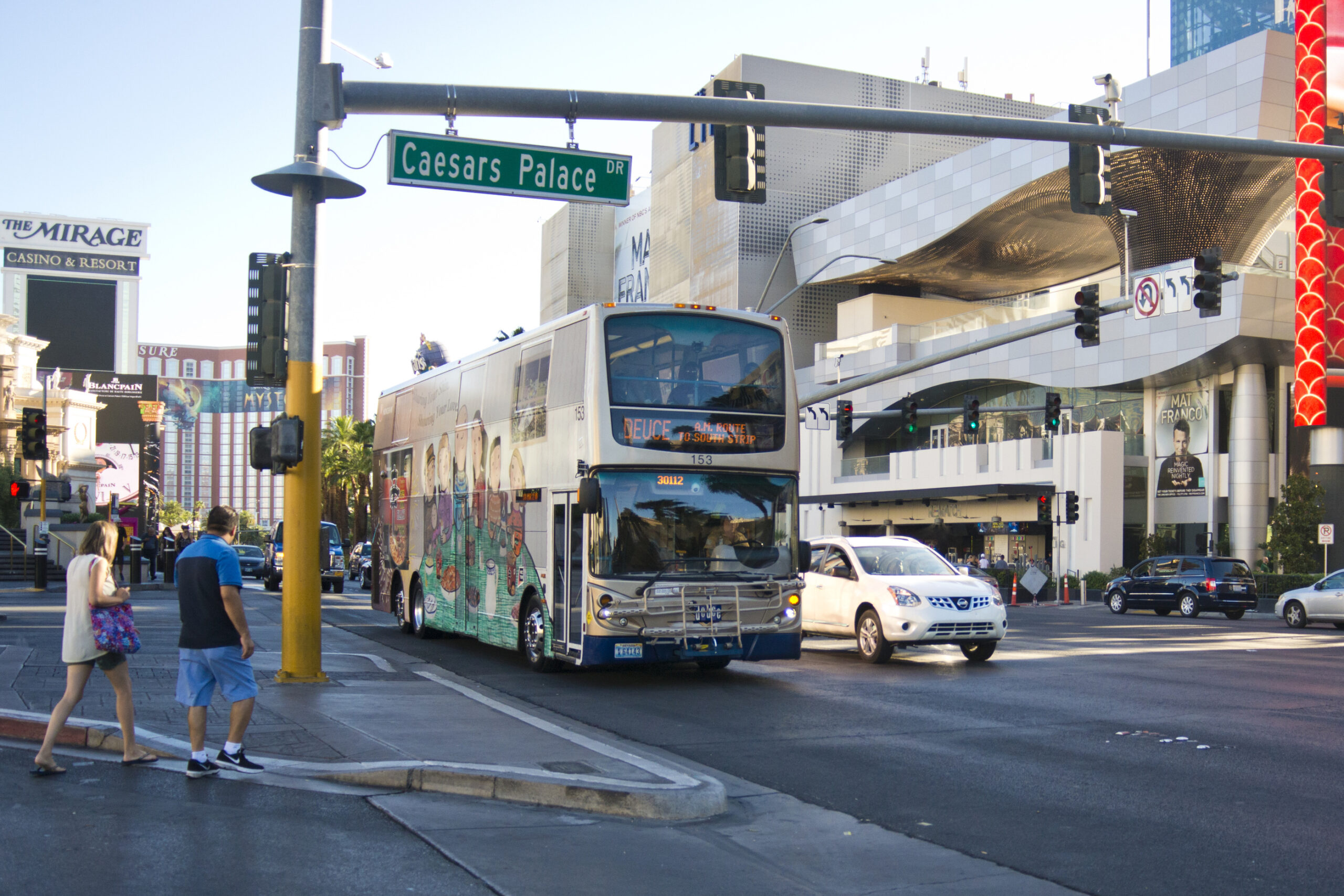
On the day Victoria Preciado saw double-decker buses roll down Las Vegas Boulevard, she quit her job as a hotel shuttle driver and imagined herself behind the wheel of a new vehicle.
She turned that vision — and spontaneous decision — into a career. For the past 11 years, Preciado has driven the Regional Transportation Commission of Southern Nevada’s iconic two-story buses that traverse the casino-lined roadway. They’re formally called the Deuce On The Strip, but Preciado has a different way of describing the mammoth buses. She said it’s like “driving a Volkswagen on steroids.”
Four days a week she commandeers the Deuce, answering tourists’ questions along the way. Preciado drives the RTC’s Downtown Loop, a free shuttle service, on her fifth day of work.
“I get an office with a view,” Preciado said.
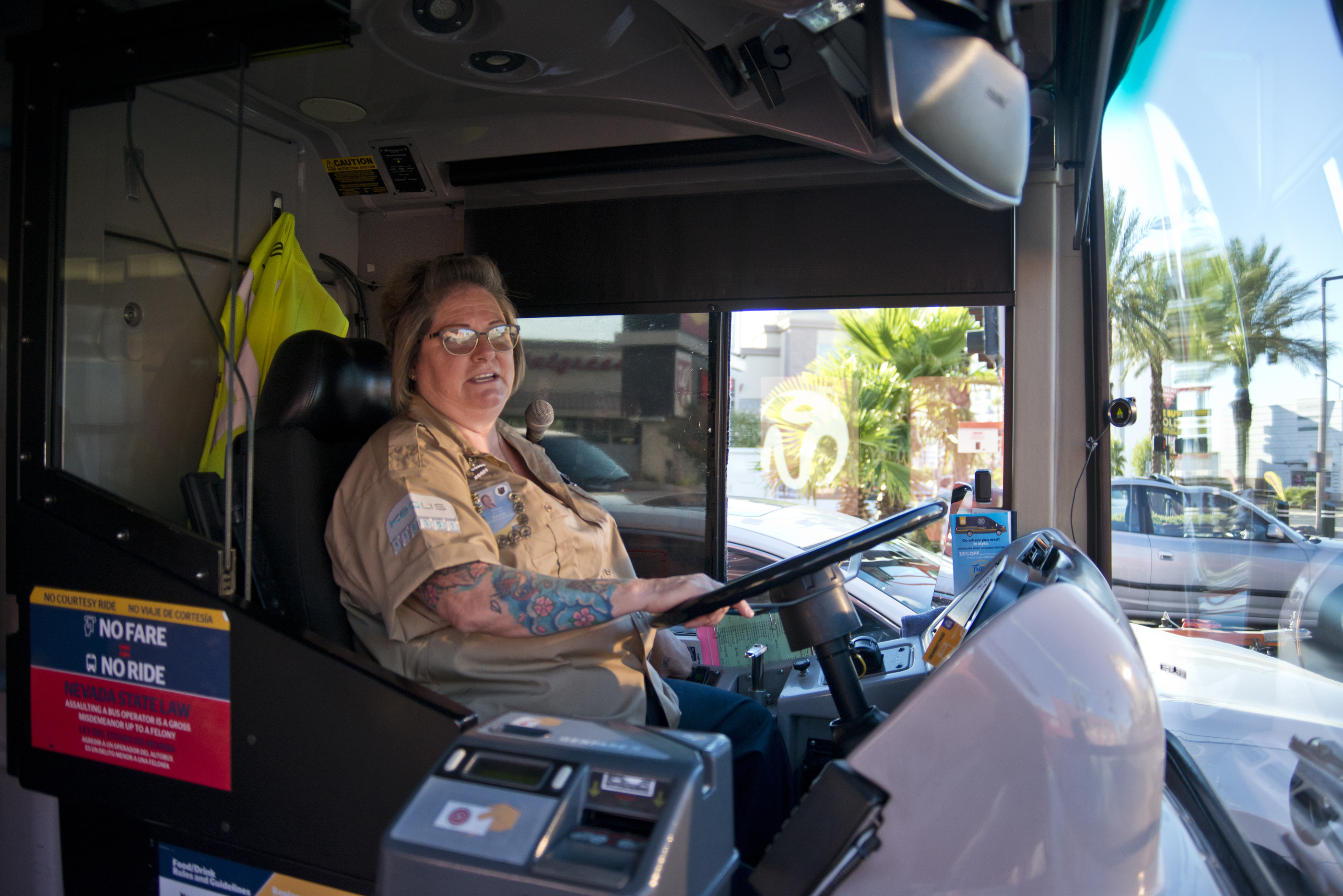
Her buses haven’t been as full in recent years, though. Preciado estimates the Deuce buses are at 60 percent capacity most days, down from the heyday of 90 percent. The reason: ride-share companies such as Uber and Lyft, which have been siphoning riders who prefer door-to-door service over a public transit bus that makes multiple stops.
“There was a time not very long where we were seeing a profit along the Strip, and, in the transit industry, there’s really no such thing as a profit,” said Tina Quigley, chief executive officer of the RTC.
The RTC’s bus route in the resort corridor — from downtown Las Vegas to the south end of the Strip — was one of the only profitable lines in the United States, she said. The route generated a yearly $6 million profit, which the agency used to subsidize other residential routes.
Not anymore. For the first time since the double-decker buses made their Strip debut in 2005, the RTC started subsidizing the resort corridor route in the most recent fiscal year. Ridership and revenue have fallen dramatically since September 2015, when ride-share companies legally began operating in Southern Nevada.
“Do I have any takers for Fashion Show, Wynn, Encore?” Preciado said over the bus intercom on a recent morning.
No one moves.
“Continuing on.”
The bus accelerates forward, on to the next stop.
***
Paulette Doolittle boarded the double-decker bus driven by Preciado just after 7 a.m. She caught the bus at the Bonneville Transit Center en route to her job as a porter at the Mandalay Bay Resort and Casino. Her shift starts at 8 a.m., but Doolittle hopped on a bus near her northwest valley home at 6:25 a.m.
She carpools to work with friends some days, but if not, this is her commute.
“It’s all right; it’s convenient,” Doolittle said. “It might take a little longer to get where you’re going, but it’s okay. There’s some good, and there’s some bad.”
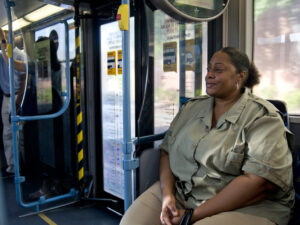
While tourists may use the bus for sightseeing, Doolittle represents a sizable share of passengers who count on public transit for their commute. Based on the RTC’s latest “Origin and Destination Survey,” about 60 percent of trips are work-related while the other 40 percent are for recreational, medical, social, shopping or educational purposes.
Anthony Paradiso, 49, fits the latter description. On the same morning, he was riding a bus that travels east and west on Flamingo Road. He had just finished donating blood.
“It’s easier for me,” he said. “I don’t like to drive.”
Since fiscal year 2015, Strip ridership has decreased by 3.3 million passenger trips. General market ridership, meanwhile, grew by 3.7 million passenger trips during that time frame.
M.J .Maynard, the RTC’s deputy CEO, said the residential ridership increase is bucking the national trend and is likely tied to population growth. Additionally, nine of the agency’s 39 fixed routes are frequent, meaning buses arrive every 15 minutes, which Maynard said has been another draw for customers. The RTC hopes to expand its offering of frequent routes.
Residential public transit is far from a moneymaker, though. For every dollar the RTC spends operating those routes, it only receives about 40 cents in fare revenue, which Quigley said is about double the national average but still not profitable.
Year-to-year comparisons show the revenue hit that occurred as passengers flocked to ride-share companies in lieu of public transit. Consider the month of October: Strip revenue stood at nearly $2.4 million in October of fiscal year 2016. The next year October revenue had fallen to $2.1 million, followed by $1.9 million in fiscal year 2018 and $1.7 million in fiscal year 2019.
RTC officials acknowledge it’s difficult to compete with the brand recognition of companies such as Uber and Lyft. Stickers featuring their respective black and pink logos grace the windshields of so many vehicles dropping off or picking up tourists along the Strip.
“Those are globally known brands,” Quigley said. “They already have some familiarity with the app.”
The RTC has an app, too, as well as ticket vending machines scattered across the tourist corridor, but the trick is building awareness. During the most recent fiscal year, the agency spent $300,000 to market and advertise its transit system and services.
The transportation agency also employs 30 “transit ambassadors” donning blue shirts who help customers at certain high-traffic bus stops. Need to know where or how to buy a bus ticket? They can help. Need directions to a tourism landmark? They can help with that, too.
“That’s part of our marketing,” Maynard said. “They’re boots on the street.”
But for all those efforts, Strip ridership sometimes boils down to serendipity. Just ask Scott and Ava Rodda, visitors from Adelaide, Australia, who recently boarded the Strip & Downtown Express (SDX) bus at a stop near the Paris Las Vegas Hotel and Casino.
Their destination: the Gold & Silver Pawn Shop (as seen on “Pawn Stars”) and the Premium Outlets downtown.
Their reason for choosing public transit: “We literally stumbled across it when we were walking,” Scott Rodda said, “and we thought it would be a really cool way to see the Strip.”
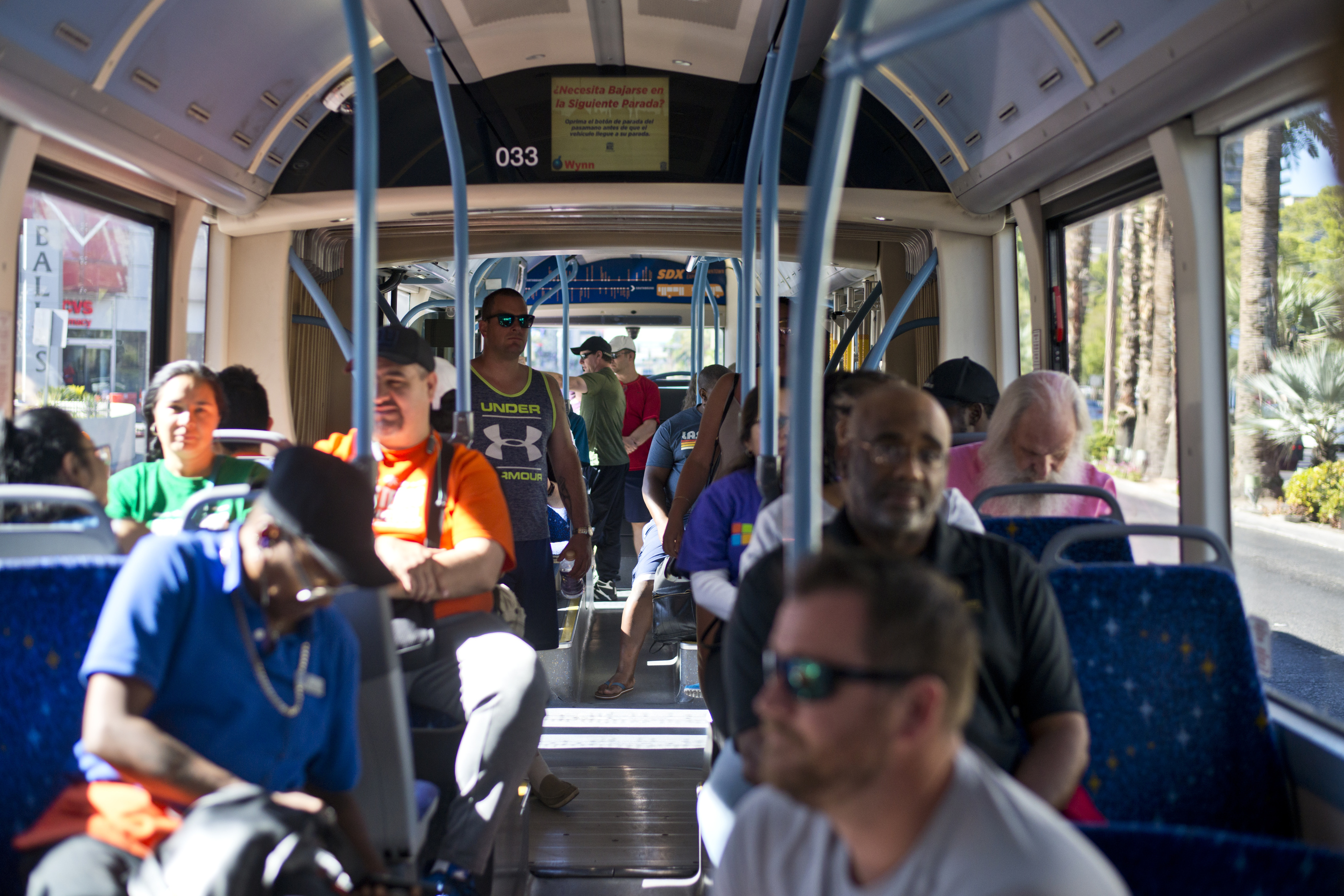
***
Declining revenue — at least for the time being — hasn’t led to any service reductions. The agency isn’t cutting or adding any service routes for fiscal year 2020, which began July 1.
The RTC, however, predicts fare revenue in the Strip corridor will continue its downward slide and decrease by 5 percent this fiscal year. General market revenue is expected to increase by 1 percent. Quigley said the transportation agency plans to make quarterly presentations to its board about transit ridership and revenue.
“We are very concerned and It is fluid,” she said. “We don’t want anything to be a surprise to our board. If we have to cut routes, we don’t want that to be a surprise.”
RTC officials said data would drive any decisions regarding service changes, which could include cutting route length, curbing bus frequency or eliminating routes. If financial circumstances get dire, Quigley said the board would consider a ballot question essentially asking voters whether they’d approve a tax increase to maintain current transit services.
But the agency is hardly resting on its laurels as the transportation industry evolves.
Last month, the RTC launched an on-demand service called “Trip to Strip,” in which an 11-passenger van shuttles people to various locations within the Strip corridor. If it sounds eerily similar to the likes of ride-share, that’s the point: The agency is testing this form of microtransit as customers gravitate toward transportation they can arrange with the tap of a finger.
So far, “Trip to Strip” ridership has grown by double digits every week, Maynard said.
The agency also has partnered directly with Lyft to ensure smoother commutes for Southern Nevada residents — specifically, those working at the Northgate Distribution Center in North Las Vegas. Under a pilot program created late last year, employees of Fanatics, a sports merchandising company, can use Lyft at a reduced rate for first- and last-mile service from 13 specified RTC bus stops. In other words, employees take public transit as far as they can to their job and then hail ride-share for the final leg.
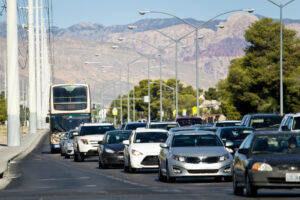
The Northgate Distribution Center, which houses a Fanatics distribution center, sits in an area not served by the RTC’s fixed-route transit system. Per the partnership, Lyft provides service at a reduced rate while the RTC subsidizes $1 per trip. Fanatics then picks up the remaining tab for employees who use Lyft to get from designated bus stops to the job site.
The transportation agency also has been piloting ride-share partnerships for paratransit, which serves residents who have physical or cognitive disabilities. RTC officials consider it a win-win because of its potential to reduce costs while also providing more personalized, on-demand service. As it stands now, each paratransit trip costs the agency about $35 per passenger.
Quigley, the region’s transportation guru, doesn’t expect the innovation to slow down. She considers it a necessity.
“Obviously, the business model of the fixed route where it stops every quarter of a mile is something that is going to be challenged moving forward, recognizing that there are cost-effective options that are more efficient,” she said. “I feel really strongly that just because we’re government doesn’t mean we have the ability to sit back and let other business plans evolve without us trying to challenge our own business plans and model.”
In the meantime, the Deuce buses will remain a fixture on the Strip, stopping roughly every 15 minutes at most casinos.
